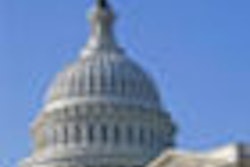
When the Patient Protection and Affordable Care Act (PPACA) was signed by U.S. President Barack Obama in March 2010, the law authorized the spending of millions of dollars to help Americans take better care of their oral health.
But with Congress locked in a battle to trim trillions from the federal budget and raise the nation's debt ceiling, key provisions designed to promote research, preventive programs, and oral health literacy languish without funding.
"We're talking about our economy collapsing rather than funding some important health initiatives," said Jude McCartin, a spokeswoman for Sen. Jeff Bingaman (D-NM), a leading congressional advocate for the oral healthcare provisions.
Meanwhile, funding for the current fiscal year has been blocked outright for another initiative, a $60 million program to allow states to set up pilot projects to try out alternative workforce models such as dental therapists.
The PPACA places a major focus on expanding the dental workforce, authorizing funds for training traditional dental providers, and exploring the use of new models.
At least 49 million Americans live in more than 4,000 areas lacking adequate oral healthcare services, and the U.S. would need nearly 10,000 additional practitioners to meet the needs of these shortage areas, according to the U.S. Department of Health and Human Services' Health Resources and Services Administration (HRSA). Moreover, 16 million beneficiaries are scheduled to join Medicaid in 2014, and a pediatric dental benefit has been included in essential benefit packages under the PPACA.
Opposition to pilot programs
A $32.7 million workforce improvement initiative aimed at educating more traditional oral healthcare workers -- including dental hygienists and general, pediatric, and public health dentists -- received wide praise from professional organizations and was funded for fiscal year 2011.
But dental groups remain divided over another workforce provision of the PPACA.
The healthcare reform law relies heavily on a variety of pilot programs to explore new ways of providing medical services with more efficiency and at a lower cost.
And the PPACA authorized the spending of $4.9 million in fiscal year 2011 to help states begin setting up demonstration projects to explore the use of alternative oral health provider models. These include advanced dental hygiene practitioners, community dental health coordinators, and dental therapists, such as those now performing preventive and restorative procedures in many countries around the world and in Alaskan tribal areas.
— Shelly Gehshan, director, Pew Children's Dental Campaign
Ultimately, the proposed Alternative Dental Health Care Provider Demonstration Project would offer 15 states grants of roughly $4 million each to fund the pilot programs at a total cost of approximately $60 million.
The measure was applauded by more than 60 public health, oral health, and consumer groups, including the American Dental Education Association, the American Dental Hygienists' Association, the Pew Children's Dental Campaign, and the Children's Dental Health Project.
"New types of dental providers are critical to addressing the 'silent epidemic' of untreated dental disease," the supporting organizations wrote in a letter to congressional leaders.
But the ADA and several other professional groups opposed the workforce pilots, launching their own letter-writing effort earlier this year to press congressional leaders to block the funding for fiscal year 2011.
"The American Dental Association writes to state its opposition to funding for the Alternative Dental Health Care Provider Demonstration Project," noted Raymond Gist, DDS, ADA president, and Kathleen O'Loughlin, DMD, executive director, in a March 8, 2011, letter to leaders of the Senate Labor, Health and Human Services, Education, and Related Agencies Subcommittee.
With five new dental schools opening since 2000 and others being planned, "the dentist workforce is growing," the ADA leaders wrote. "There is no evidence to support the economic feasibility of midlevel providers, such as dental therapists who are trained to perform irreversible, surgical procedures."
In an identical letter, the ADA was joined by organizations including the Academy of General Dentistry and the American Academy of Pediatric Dentistry in opposing funds for the pilot programs.
And the professional groups got their way: Funding for the pilot programs was blocked for fiscal year 2011.
"The ADA was not unhappy with the block," acknowledged an ADA spokesperson. "We think there are better ways to take care of the problem than to create this two-tiered system."
Not over yet
But the Obama administration has requested $4.9 million for the coming year, and HRSA has not given up on the program.
"The president's budget includes a funding request for the Alternative Dental Health Care Provider Demonstration Project for fiscal year 2012, which, if appropriated, would allow us to stand up the program in the new fiscal year," said an HRSA spokesperson.
Supporters continue to watch and wait for movement on the Senate Labor, Health and Human Services, and Education budget.
"Every year will be a new ball game as to whether or not funding is appropriated," said Shelly Gehshan, director of the Pew Children's Dental Campaign. She knows both sides are weighing in on the matter, she said.
"It's hard to see how anyone could be against learning the best ways to gain access" to dental services, said Gehshan, who also serves on an access committee convened by the Institute of Medicine to explore barriers to oral health disparities. "The current system doesn't serve one-third of the population. We need more information about what works to reach that third."
Meanwhile, grassroots coalitions have been moving forward with their own efforts to develop midlevel provider programs in five states, with the help of a $16 million dental therapist project launched by the W.K. Kellogg Foundation last year.
And in a June letter to Senate leaders, Bingaman and several Senate colleagues continued to press for appropriations for oral health provisions under the PPACA for fiscal year 2012: $45 million for traditional and alternative oral health workforce providers, $5 million for oral health literacy, $8 million for dental caries disease management, $15 million for school-based sealants, and $30 million to strengthen oral health surveillance and infrastructure.
But in the current budget climate, it's hard to feel too hopeful, noted Bingaman spokeswoman McCartin.
"The question is whether we'll have cuts, rather than what new things we are funding," she said.



















